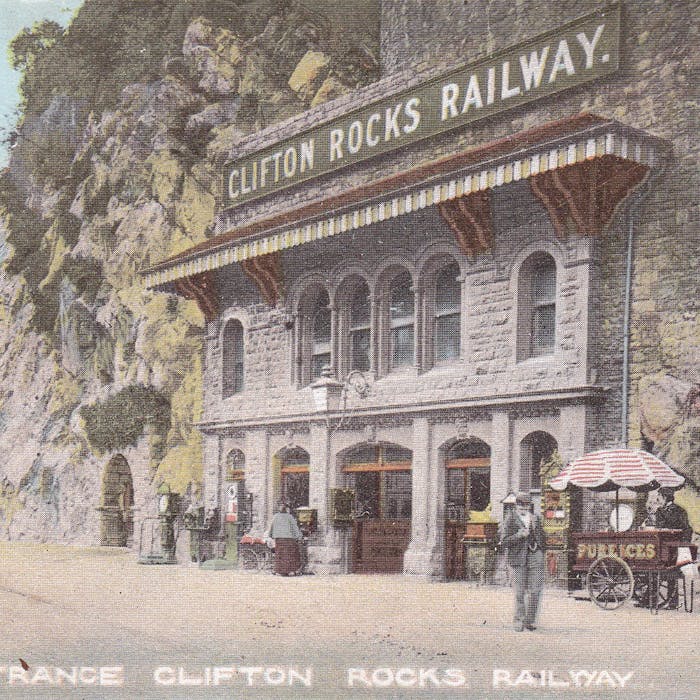
The Clifton Rocks Railway - Bristol's lost funicular connection
The 1880s and 1890s were a great age for funicular railways in Britain. Some remain as icons like that in Lynton & Lynmouth in Devon, but not all were successful, even during their early years. The cliff railway in Clifton, Bristol was such a grand idea that failed to flourish.
The Clifton Rocks Railway was an underground funicular, linking prestigious Clifton on the cliffs of the Avon Gorge at the top to Hotwells and Bristol Harbour at the bottom by the river, in a tunnel cut through the limestone cliffs.
The upper station was close to Brunel's famous Clifton Suspension Bridge across the Gorge, and adjacent to the former Grand Spa Hotel (now the Avon Gorge Hotel). The lower station was opposite the paddle steamer landing ferries at Hotwells railway station, a terminus of Bristol Tramways and the ferry across the river Avon.
Construction of the railway was funded by George Newnes, who was also proprietor of the Lynton and Lynmouth Cliff Railway in Devon (see separate Six Things entry), and as at Lynton and Lynmouth, the engineer was George Croydon Marks.
Construction began in March 1891. The 28 feet wide tunnel was bored through the limestone cliffs using both machine-drills and hand-drills and then lined with bricks, taking two years to construct, and going three times over budget. Propulsion was by the water-balance method, in which the cars of each pair had a tank filled with water at the top, and the weight of which provided the power for the descent after which the tank was emptied.
The railway opened on 11th March 1893 and carried 6,220 passengers on the opening day. However, it was not universally popular by Clifton locals, who resented easy access to their leafy streets by the dockyard workers from down below. Passenger numbers steadily declined until 1908, when the company was declared bankrupt.
In 1912 the funicular was sold to Bristol Tramways. When, in 1922, Hotwell Road was widened as a fast road called Portway, it meant the closure and demolition of the Hotwells railway station and tram stop, which had both provided a good transport connection to the Clifton Rocks Railway. Passenger numbers dropped sharply, and the last train ran on 29th September 1934.
During the Second World War, the tunnel, which was used as a relay station by the BBC, and air-raid shelter. The entrances to the railway at the top and the bottom can still be seen. There has been a recent proposal to turn the top section into a museum.
Further reading
Links to external websites are not maintained by Bite Sized Britain. They are provided to give users access to additional information. Bite Sized Britain is not responsible for the content of these external websites.
